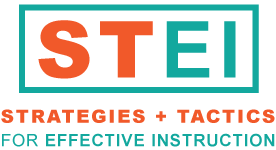Back to: Evaluating
Teaching is challenging work. Teachers wear many hats, and diversity in the classroom has never been greater than it is today. Keeping track of student learning proves to be an equal challenge. Effective teachers not only keep efficient records of their students’ progress, but they also teach students how to chart their own progress. In doing so, students learn the importance of recordkeeping as well as the value of using progress to guide further achievement efforts. It provides students a sense of acceptability and accomplishment. There are no surprises about grades because students are kept informed. Students can be taught to monitor both academic and behavioral progress.
How am I doing?
Have students create their own monitoring systems. Students not only can help identify what they feel needs to be monitored but create their own chart for doing so. Using an index card, students can identify what, how, and how often they will monitor their behavior. If counting on a daily basis, it is important for the students to tally and summarize the total number of tallies of the targeted behavior. An important question should need be asked-“Did I reduce (or increase) my behavior from the day before?” (or class before, depending on how this is implemented). At week’s end, or sooner if need be, students should chart their progress so that a visual prompt shows the trend in behavior.
If you can count it, chart it!
Any behavior that can be counted, can be charted. Teaching students to monitor their own participation and behavior is an important part of generalizing learned behaviors. The ultimate goal of any instruction is not only to have students learn, but spontaneously generalize or transfer the skill to other settings and learning activities. In order to do this several things must occur. Students must learn the fact, concept, strategy, or behavior to an automatic level. That is, they must be able to engage and demonstrate the behavior in the presence of distracters. Many students (and adults) do not spontaneously transfer what they learn and must be specifically taught how to. In instructing students to generalize their learning, start at the level of recognizing the presence or absence of the behavior, demonstrate examples, and model how to apply the knowledge in different situations.
Look back at the tactics discussed under Evaluation: Monitor Engaged Time. Inventory how you can teach students to chart what they monitor. The simple task of teaching students to monitor their behavior has an impact. When students learn to chart what they monitor, they create a visual reinforcement or prompt of their progress in and of itself increases the likelihood that the behavior will be performed. Remember, for some students, “public display” can be simply between the student and the teacher. For some students sharing and charting progress data with a teacher or adult may have the same impact as publicly displaying it to the entire class (e.g., posting on a bulletin board) Teaching students to both monitor and chart their behavior makes them more aware of it, so they will take ownership of it, problem-solve to improve or change it, be recognized for it, and generalize it to other settings.
